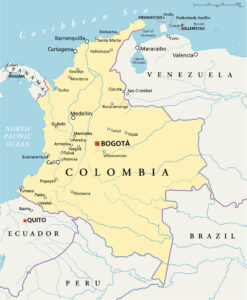
Imagine a time when New Year’s Day was celebrated in March rather than January. This intriguing historical shift highlights the significance of 25 March, known as Lady Day or the Annunciation of the Lord, which was once regarded as the start of the new year.
The Annunciation
The term ‘annunciation’ originates from the concept of making an announcement. Biblically, it refers to the angel Gabriel’s message to Mary, revealing that she would conceive Jesus, the Son of God. This event is recounted in Luke 1:26-38: “The angel Gabriel came to Nazareth, and spoke to Mary, who was a virgin pledged to be married to a man named Joseph, who was a descendant of David. Mary was puzzled and afraid, but the angel reassured her and told her not to be afraid. The angel told Mary that she should conceive and give birth to a son, and she should call him Jesus. Mary did not understand how that is would be possible but the angel explained that it would happen by the Holy Spirit, and the child would be called the Son of God. Then Mary said, ‘Here am I, the servant of the Lord; let it be with me according to your word’” (Luke 1:38 NRSV).
Lady Day
Lady Day commemorates the Annunciation on 25 March and is celebrated as the ‘Feast of the Annunciation’ in the Christian liturgical calendar. This day is significant for marking the moment Mary accepted her role in the divine salvation plan. The nine-month span between 25 March and Christmas on 25 December symbolizes the period from conception to birth. Although historically undocumented, the tradition holds that the conception occurred on the same day as the Annunciation. During the Council of Toledo in AD 656 and the Council of Constantinople in AD 692, Christians were encouraged to fast during Lent, excluding Sundays and Lady Day. In medieval Europe, the day was marked by a Missa Aurea (Golden Mass) in Mary’s honor, followed by processions and plays in some regions.
In central Europe, Lady Day heralded the return of swallows, earning it the name ‘Feast of the Swallows’. In Poland, it signaled the arrival of storks. In Britain, seed cakes were consumed to symbolize the seed of Mary, paralleling the sowing of spring seeds.
New Year’s Day
From 1155, Lady Day signaled the beginning of the Church year, aligning with the ecclesiastical, legal, and economic calendars. For centuries, it functioned as New Year’s Day, marking the start of the new year.
Quarter Days
The year was segmented into quarters, each starting on a Quarter Day, traditionally marked as Lady Day (25 March), Midsummer Day (24 June), Michaelmas Day (29 September), and Christmas Day (25 December) in England, Wales, and Ireland. In Scotland, Quarter Days fell on the 28th of the preceding months. These days were pivotal for settling rents, initiating legal contracts, moving tenancies, and commencing new jobs. Even today, Quarter Days play a role in lease and tenancy agreements in the UK.
Calendar Reform
Pope Gregory XIII initiated reforms to realign the Julian calendar with natural seasons, introducing the Gregorian calendar. Adopted by most Catholic countries in 1582, Protestant nations hesitated initially due to Reformation tensions. Eventually, other European nations followed suit. Key reforms included a leap year every fourth year, century years omitted unless divisible by 400, and moving New Year’s Day to 1 January.
Scotland
In 1599, Scotland embraced the Gregorian calendar, declaring 1 January as New Year’s Day in 1600, aligning with much of Europe but diverging from England. This transition led to the rise of Hogmanay due to Calvinist opposition to Christmas.
England and the American Colonies
England adhered to the Julian calendar until 1752. The English Parliament under King George II passed the Calendar (New Style) Act in 1750, transitioning England and its American colonies to the Gregorian calendar. New Year’s Day shifted to 1 January, and Lady Day became Old New Year’s Day. The year 1751 was truncated to span from Lady Day to New Year’s Eve. In 1752, the calendar was realigned by omitting eleven days, following 2 September directly with 14 September.
Old Lady Day and the Tax Year
Due to the calendar shift, some dates acquired old and new designations. Old Lady Day was recognized as 5 April, maintaining tax year consistency. The tax year that began on 25 March 1752 extended to 4 April 1753 to preserve the annual tax length, with subsequent years starting on 5 April. In 1800, Old Lady Day adjusted to 6 April due to the non-leap year status in the Gregorian calendar, a date that remains unchanged in the UK.
Waffle Day
In Sweden, Norway, and Denmark, Lady Day is linked to waffles. In Swedish, ‘Vårfrudagen’ (Lady Day) phonetically resembles ‘Våffeldagen’ (Waffle Day), leading to the tradition of consuming waffles on this day, celebrated as Waffle Day in Scandinavian and Swedish communities globally.
Mothers’ Union
The Mothers’ Union, a global Anglican network of mothers’ groups, adopted Lady Day in 1897 as a day of prayer and thanksgiving. Special services are often held on this day in affiliated churches.
Prayer for Lady Day
Lady Day’s traditional readings include Isaiah 7:10-15 and Luke 1:26-38, recounting the Annunciation. The Anglican collect prayer for Lady Day is: “We beseech thee, O Lord, pour thy grace into our hearts; that, as we have known the incarnation of thy Son Jesus Christ by the message of an angel, so by his cross and passion we may be brought unto the glory of his resurrection; through the same Jesus Christ our Lord. Amen.”
This article was originally written by www.christiantoday.com






